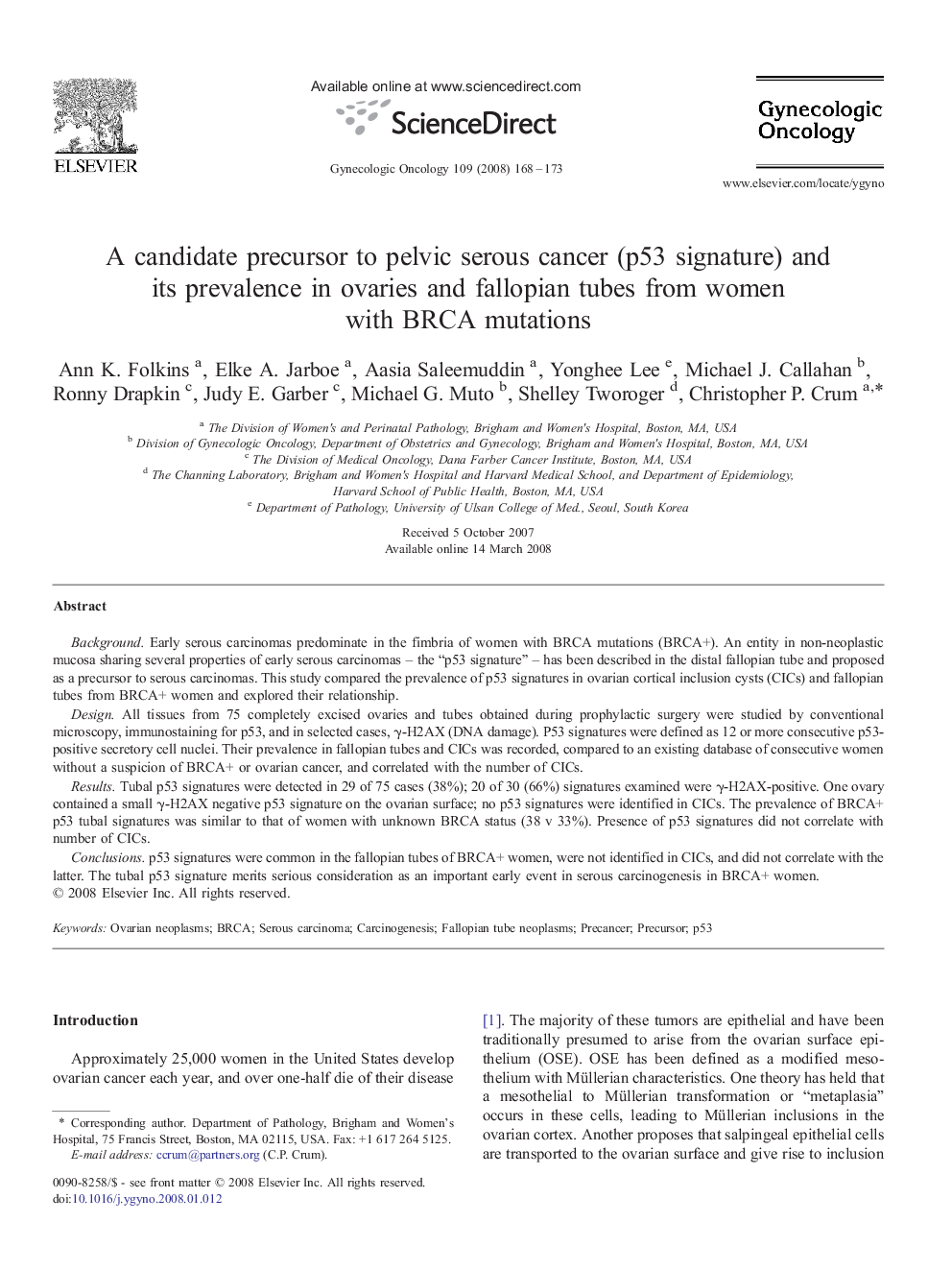| Article ID | Journal | Published Year | Pages | File Type |
|---|---|---|---|---|
| 3947514 | Gynecologic Oncology | 2008 | 6 Pages |
BackgroundEarly serous carcinomas predominate in the fimbria of women with BRCA mutations (BRCA+). An entity in non-neoplastic mucosa sharing several properties of early serous carcinomas – the “p53 signature” – has been described in the distal fallopian tube and proposed as a precursor to serous carcinomas. This study compared the prevalence of p53 signatures in ovarian cortical inclusion cysts (CICs) and fallopian tubes from BRCA+ women and explored their relationship.DesignAll tissues from 75 completely excised ovaries and tubes obtained during prophylactic surgery were studied by conventional microscopy, immunostaining for p53, and in selected cases, γ-H2AX (DNA damage). P53 signatures were defined as 12 or more consecutive p53-positive secretory cell nuclei. Their prevalence in fallopian tubes and CICs was recorded, compared to an existing database of consecutive women without a suspicion of BRCA+ or ovarian cancer, and correlated with the number of CICs.ResultsTubal p53 signatures were detected in 29 of 75 cases (38%); 20 of 30 (66%) signatures examined were γ-H2AX-positive. One ovary contained a small γ-H2AX negative p53 signature on the ovarian surface; no p53 signatures were identified in CICs. The prevalence of BRCA+ p53 tubal signatures was similar to that of women with unknown BRCA status (38 v 33%). Presence of p53 signatures did not correlate with number of CICs.Conclusionsp53 signatures were common in the fallopian tubes of BRCA+ women, were not identified in CICs, and did not correlate with the latter. The tubal p53 signature merits serious consideration as an important early event in serous carcinogenesis in BRCA+ women.
